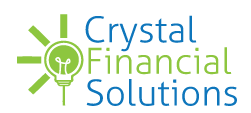As costs continue to rise, loans can be useful to help cover the price tag of college. However, students and parents need to understand the implications of each type of student loan to help avoid sticker shock after graduation. It is important to remember that loans must be paid back with interest whereas scholarships never have to be paid back. Here are the different types of Federal Student Loans (FSLs) and information on interest rates and repayment:
The U.S. Department of Education has two main types of student loans:
- William D. Ford Federal Direct Loan Program. There are three types of Direct Loans available:
- Direct Subsidized Loan
- These loans are for undergraduate students who have financial need.
- Interest rate for new loans made between July 1, 2017 and July 1, 2018 was 4.45%.
- No interest is charged to the student while they are in college. Interest starts to accrue after leaving college.
- Payments are made to the U.S. Department of Education.
- The amount of the loan available is dependent on the student’s grade level and whether they are a dependent of someone or are independent. Maximum loan amount is $5,500.
- Direct Unsubsidized Loan
- These loans are made to undergraduate, graduate, and professional students. Financial need is not a consideration.
- Interest rate for undergraduate students is the same as the rate for the Direct Subsidized Loan. For graduate and professional degree students, the interest rate was 6% for new loans made between July 1, 2017 and July 1, 2018.
- Interest is charged from the time the loan is taken out. Any unpaid interest is added to the principal amount of the loan. This means if the student borrowed $1,000 their freshman year and didn’t make any interest payments, when they start making payments after graduation (assuming they graduated in four years), they will owe $1,190 on the loan, at the 4.45% interest rate.
- Maximum loan available is $20,500. Actual amount available to individual students is dependent on their grade level, whether they received any subsidized loans, and whether they are a dependent.
- Direct PLUS Loan
- Loans of this type are for parents who borrow money to pay for their undergraduate student’s education. It can also be used by graduate or professional students. Financial need is not a requirement.
- Interest rates are higher; the rate was 7% for new loans taken out between July 1, 2017 and July 1, 2018.
- Maximum loan amount is the cost of attending the college less any other financial aid the student has received.
- Federal Perkins Loan Program
- The loan is only for students with exceptional financial need.
- The loan is school-based and the college is the lender.
- Interest rate is 5%.
- Maximum loan amount per year is $5,500 for undergraduate students and $8,000 for graduate and professional students.
- Total lifetime limit is $27,500 for undergraduate students and $60,000 for graduate students.
- Direct Subsidized Loan
Making informed financial decisions about how to fund a college degree is essential. Taking time to investigate your options for reducing the costs of college including tax benefits, tax credits, scholarships, and loans can reduce your student loan payments in the future and can lessen the likelihood of being surprised by a large bill after graduation. If you’d like any help further investigating college payment options, please reach out so we can talk more!
Judith Ackland has more than 26 years of experience in accountancy and financial planning, including seventeen years as a CFO of a diverse business. She started Crystal Financial in 2010 to help a wide array of individuals, families, and business owners better understand their finances and how good financial management could help them achieve their goals. Judith has an MA in Professional Accountancy from the University of Nebraska at Lincoln as well as a Certified Public Accountant Certificate and a Certified Financial Planner designation.


